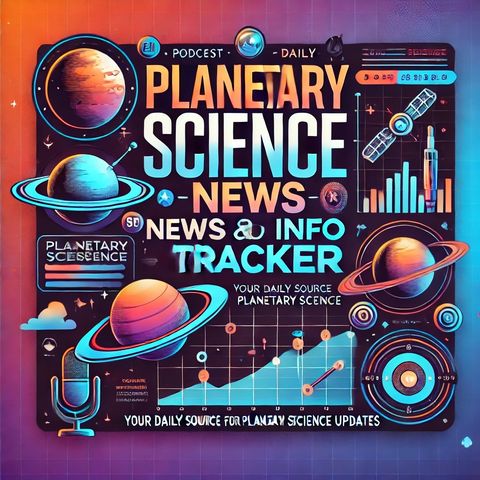Unlock the Cosmic Tricks and Treats of the Solar System this Halloween

Download and listen anywhere
Download your favorite episodes and enjoy them, wherever you are! Sign up or log in now to access offline listening.
Unlock the Cosmic Tricks and Treats of the Solar System this Halloween
This is an automatically generated transcript. Please note that complete accuracy is not guaranteed.
Description
As Halloween approaches, many look to Earth’s skies and beyond for celestial treats or tricks. The Solar System, with its myriad wonders, offers an assortment of eerie delights and chilly...
show moreOne of the most fascinating features is Saturn's moon, Mimas, often dubbed the "Death Star" due to its striking resemblance to the fearsome space station from Star Wars. Its gigantic crater, Herschel, spans a third of the moon’s diameter, and could easily serve as the ultimate setting for a cosmic thriller.
Turning to Mars, the Red Planet houses Valles Marineris, a canyon system that dwarfs Arizona’s Grand Canyon. If your Halloween involves imagining haunted locales, this martian rift could be the ultimate spine-chilling expanse, with dust storms wrapping the landscape like trapped phantoms. Perhaps the greatest trick is on the viewer, as the mysterious recurring slope lineae hint at transient dark streaks caused by possible water—a trickle of promise for extraterrestrial life?
Not to be outdone, Venus’ atmosphere swirls with sulfuric acid clouds, a true inferno that spells doom. The oppressive heat and perpetual twilight present an intimidating yet fascinating trick of nature that offers no treats but compels imaginations.
While Earth is synonymous with jack-o-lanterns, Jupiter might offer its equivalent in the form of the Great Red Spot—a titanic storm that has been raging for centuries. Could the swirling vortex hide ghostly secrets below its gaseous layers?
Comets provide another celestial trick or treat. Their unpredictable appearances and mysterious tails—plumes of gas and dust—offer dazzling displays that can illuminate night skies as if haunted by spectral glows. One such comet, Halley’s, can be seen only once every 76 years, making its infrequent visits an anticipated spectacle.
Eerily beautiful in their desolation are the ice giants, Uranus, and Neptune. These distant planets with their deep blue hues seem as cold and unwelcoming as a haunted house. Neptune's moon, Triton, is particularly intriguing with its geysers of nitrogen ice that create a ghostly mantle over its surface.
Lastly, Pluto, relegated to a dwarf planet, continues to enchant with its heart-shaped glacier, Tombaugh Regio. This unexpectedly heartwarming feature offers a charming contrast—a cosmic confection amidst the Solar System’s otherworldly chills.
With this array of celestial phenomena, one can see how the Solar System embraces the Halloween spirit in its unique way; filled with awe-inspiring spectacles and spine-tingling phenomena that invite exploration and spark the imagination. Whether you’re searching for ghouls on Mars or envisioning monsters in stormy gas giants, the cosmos offers a treasury of tricks and treats this Halloween season.
Information
| Author | QP-4 |
| Organization | William Corbin |
| Website | - |
| Tags |
Copyright 2024 - Spreaker Inc. an iHeartMedia Company

Comments